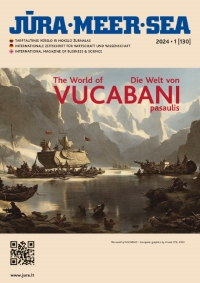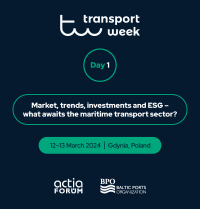Shippers and carriers weigh impact of slow steaming on overall costs
2012 03 09
- Details
SLOW-STEAMING's impact on costs continues to puzzle shippers and carriers who agree and disagree that it negates advantages of the all-water Panama route from Asia to the US east coast and others asking whether it costs carriers more at a time of low utilisation and more ships on longer, slower loops.
"Ironically, carriers are discovering that slow-steaming increases their operating costs because the fuel savings are more than offset by the higher costs of operating a longer strings," reports DC Velocity, of Attleboro, Massachusetts.
"The roundtrip cost of operating a string of seven 8,500 TEU ships steaming at 13 knots in the US west coast-Far East trade is higher than operating a string of five ships in the same trade steaming at 19 knots, according to data from Paris-based advisory firm Alphaliner," said DC Velocity.
The advantages are also apparent. With bunker costs up to US$650 a ton in 2011 from $350 a ton in recession-wracked 2009, slow-steaming can reduce costs three to five per cent as fuel burn drops as ships move through water more slowly.
"Slow-steaming is here to stay," Rick Wen, vice president of the US arm of Hong Kong's Orient Overseas Container Line (OOCL).
But Theodore Prince, who runs a Richmond, Virginia maritime consultancy bearing his name, has doubts, predicting companies will adopt an inventory bifurcation, with higher-value Asian-made goods entering on the west coast and lower-value commodities heading to the east through Panama where longer transits mean less.
Mr Prince said he believes the expanded Panama Canal will result in little cargo diversion from west coast to east coast ports because slow steaming lengthens transits and magnifies the problems they create.
Beneficial Cargo Owners (BCOs) won't achieve sufficient cost savings from an all-water route through the canal to justify the longer sailing times when compared with offloading cargo on the west coast and trans-loading to rail for the inland move, he said.
"Slow-steaming has just widened the discrepancy," he said. "The railroads haven't slowed down."
Maersk North American sales vice president William Woodhour said carriers may yet launch premium services at faster speeds, which, of course, would come with higher rates. "You have to segment your market and focus faster speeds on customers who want it," he said.
Tim Feemster, vice president and director of global logistics at real estate giant Grubb & Ellis, said it's possible that the marketplace would welcome an expedited form of liner service, noting that railways and truckers have launched similar services in recent years. "The trouble is, we haven't seen the demand for it up to now," he said.
For shippers, a longer voyage could mean additional inventory carrying costs. Slow-steaming also complicates a company's ability to react to unexpected events, such as bad weather or a labour disruption, which could affect product flow. Slower speeds can trigger changes in ordering, production, and scheduling as companies adjust to filling any holes in inventory if the goods are still on the water rather than in a DC or with their customer, said the report.
To offset slow steaming, NCR Corp, a global technology company based in Georgia, will sometimes intercept shipments arriving on the west coast before they can be transloaded to a railhead and have them moved inland by truck for faster delivery, said NCR vice president Michael Chandler.
But Genuine Parts Co vice president Mike Orr said his company has yet to experience any adverse impact on its business as a result of slow-steaming.
Home Depot supply chain vice president Mark Holifield said slow steaming causes his firm no trouble because ocean freight is slow and a couple of days of voyage variability means nothing.
"Predictability and consistency is more important than speed," said Mr Holifield, adding that slow-steaming is acceptable "as long as we can count on the published schedule."
Source Shipping Gazette - Daily Shipping News
The magazine SEA has been published since 1935
International business magazine JŪRA MOPE SEA has been published since 1999
The first magazine in Eurasia in the four languages: English, Chinese, Russian and Lithuanian
|
|










